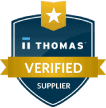Achieving Better Results for Lockheed Martin
Problem
An engineer at Lockheed Martin in Melbourne, FL was tasked with lowering utility costs throughout the entire facility. He came across a project that involved using nitrogen to fill test boxes, which were used to test parts for NASA. These boxes need to be durable enough to withstand an outer space environment; additionally, the actual testing process proved to be a very costly endeavor, as it required a considerate amount of nitrogen.
To resolve this issue, the engineer contacted Compressed Air Systems (CAS) with the intention of replacing their existing nitrogen system with an oil-free air compressor. The engineer was convinced that Lockheed Martin could achieve even better results using clean, dry compressed air instead of nitrogen.
Solution
CAS sales manager Kyle Randall was assigned to the project. After determining that there was no room to install the compressor in the facility, Mr. Randall knew that a custom solution was needed; a portable room was engineered to accommodate the complete oil-free system. The CAS team deemed that a Powerex Scroll Air Compressor and desiccant dryer with a filtration system was the most ideal set up for this application.
The system consisted of four 5-horsepower scroll compressors flowing into a receiver. The four scroll pumps rotated to provide a variable pump system for better energy efficiency and redundancy. Compressed Air Systems was awarded the project and the system would have to be installed within 4 weeks; this also included the construction of a portable weather tight storage container to house the entire system.
Result
The CAS team designed the system from start to finish, and once delivered, all that was needed was the incoming power. This oil-free system was a turnkey system; it performed exactly as designed. The compressed air produced by the system was thoroughly tested by 3rd party lab technicians, who found no hydrocarbons or particles in the air.
Lockheed Martin was spending over $20,000 per month with their previous nitrogen system—this included storage, delivery charges, fees, and the cost of the nitrogen itself. Their company’s return on investment was huge, the new CAS oil-free system paid for itself within four months.










